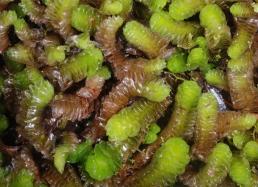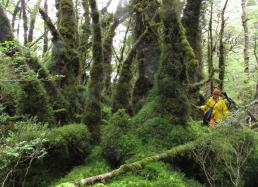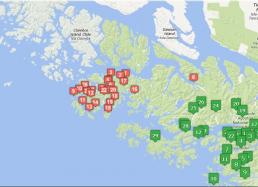About the Expedition
When we think of the world's most biologically rich habitats, tropical forests like those found in Amazonia come to mind. And it's true; regions closer to the equator typically hold the highest numbers of mammal, bird, and flowering plant species. However, scientists are just now learning that the ends of the earth harbor an equally astonishing level of diversity—when viewed through a magnifying glass.
As Darwin himself noted during his trip around Cape Horn, the damp, cold conditions at the tip of South America aren't favorable towards larger life forms like towering trees. But animals and plants on a much smaller scale seemed to thrive and multiply there. Only recently have researchers begun to identify and count the species living in these "miniature forests" and learn more about their ecological role, distribution, and conservation status.
A Hotspot of Diversity
Since 2000, an international group of scientists from The Field Museum and other institutions has been conducting an inventory of bryophytes—early land plants that include mosses, liverworts, and hornworts—in the region of Cape Horn. Within the 125,000 square kilometers (only about 48,300 square miles) of moorland, bogs, forests, glaciers, and fragmented coastline found here, researchers have estimated more than 800 bryophyte species alone, many native only to this tiny territory.
So what do these numbers tell us? They reveal that about 5% of the world's bryophytes are found on less than 0.01% of Earth's land surface, making this string of small islands at the southern tip of the Americas a "hotspot" for species richness. But there's more—not only do these petite plants shelter unique animals and create a natural community unlike anywhere else on Earth, they also recycle nutrients in the soil, prevent erosion, provide seedbeds for larger plants, and purify the air and water.
The Cape Horn Bryophyte Project
In 2011, The Field Museum and the New York Botanical Garden partnered with Chilean institutions on a four-year project to inventory the diversity and distribution of bryophytes along the Cape Horn Archipelago. Their goal is to create a comprehensive, bilingual database of mosses, liverworts, and hornworts that can be used to train U.S. and Chilean students and increase public awareness of the area's ecological wealth.
Since the archipelago currently faces threats from commercial development, logging, salmon farming, and invasive species, the team also hopes their work will help inform ongoing conservation planning and implementation to ensure the protection of this rare habitat. Already, the project's research data has proven critical in the proposal for the Cape Horn region to be granted Biosphere Reserve status by UNESCO.
To learn more about bryophytes and the team's work, explore the stories in "About the Expedition," and check out the photo galleries, videos, and blogs from their 2013 trip!





